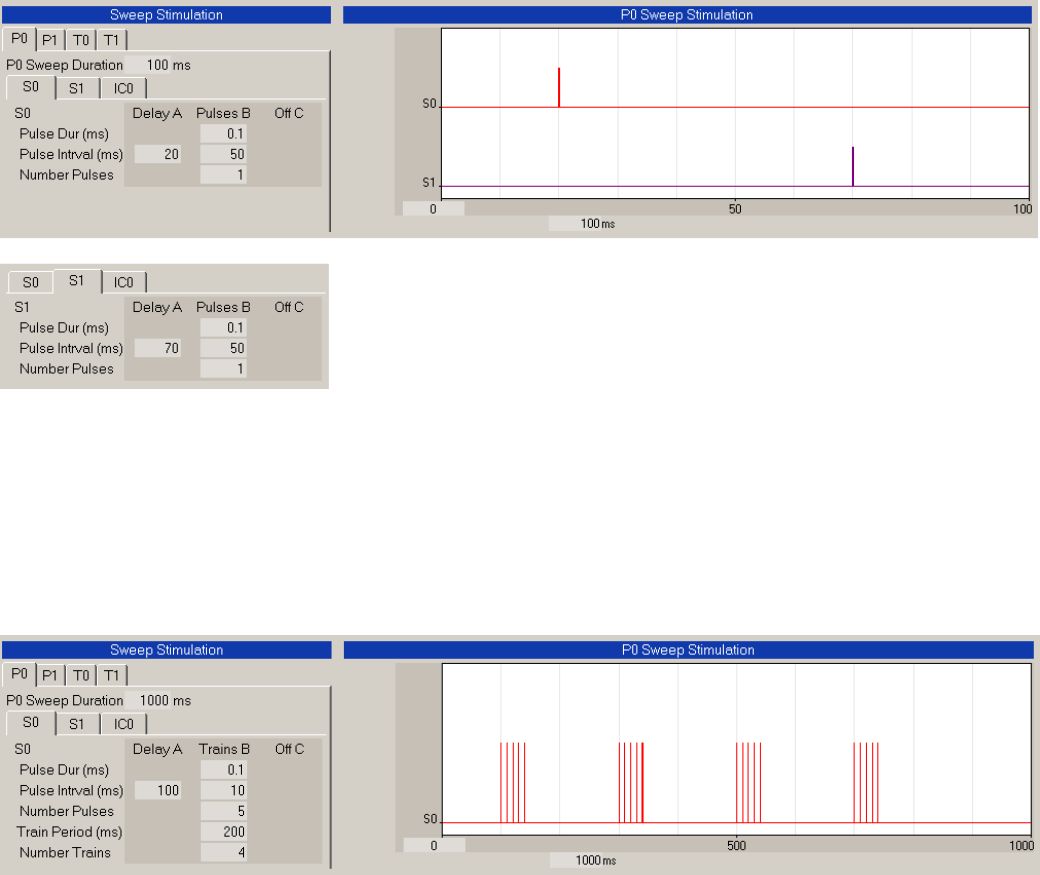User manual

96
Fig. 4.9.2.1. Heterosynaptic paired-pulse stimulation can help test for pathway independence.
Theta burst stimulation in a single sweep. Fig. 4.9.2.2 shows a theta burst stimulation in a single
sweep (rather than single trains in repeating sweeps) capable of inducing LTP. S0 Epoch B is set to
Trains, and the NumTrains is set to greater than 1 to get repetitive train stimulation.
Fig. 4.9.2.2. Theta burst stimulation for LTP induction consisting of repeating trains in a single sweep.
Primed burst stimulation. Fig. 4.9.2.3 shows primed burst stimulation capable of inducing LTP.
However, since S0 or S1 is capable of producing only pulse, trains, or repeating trains, the version of
WinLTP can only produce primed burst stimulation by outputting two extracellular pathways. It could be a
single pulse on S1 and a single train on S0, but if S1 is also being used, it has to be a Digital Out pulse
(on D2 here) and a single train on S0.
Then the two digital outputs S0 and D2 have to go into the same Stimulus Isolation Unit either by adding
an OR chip before it, or using two diodes to stop current flow in the wrong direction (this is what we do).
Check with your Stimulus Isolation Unit seller on how to do this.










